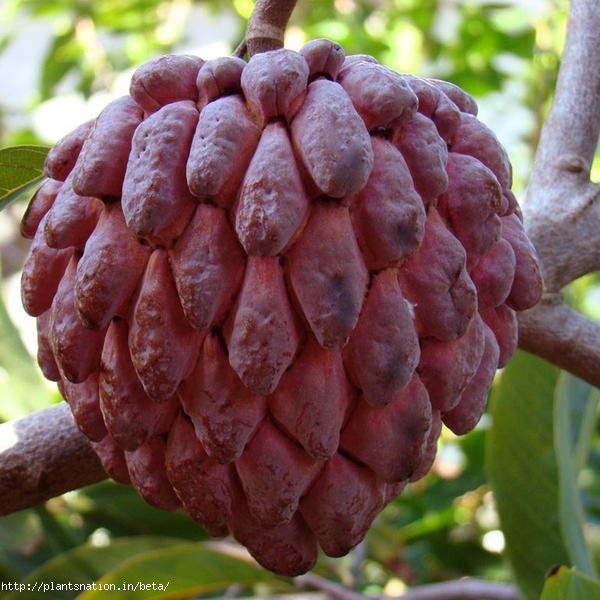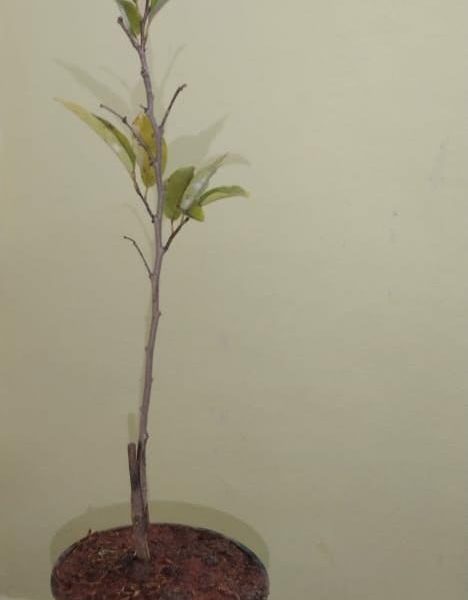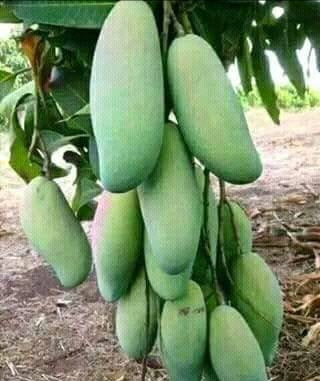. INTRODUCTION
Ber or Indian jujube (Ziziphus mauritiana) is one of the hardy minor fruit crops suitable for cultivation in arid conditions. It is native to India.
2. OBJECTIVE The main objective of this report is to present a one acre bankable model for high quality commercial cultivation of the crop. 3. BACKGROUND
3.1 Area & Production
The major ber-growing states are Haryana, Punjab, Uttar Pradesh, Rajasthan, Gujarat, Madhya Pradesh, Bihar, Maharashtra, Andhra Pradesh and Tamil Nadu.
3.2 Economic Importance
Fruits are rich in Vitamin C, A and B complex. About 5.6% digestible crude protein and 49.7% total digestible nutrients are present in the leaves making it a nutritive fodder for animals. Ber can be processed to prepare murabba, candy, dehydrated ber, pulp, jam and beverage.
- PRODUCTION TECHNOLOGY
4.1 Agro-climatic requirements
Ber grows under varying climatic conditions at elevations upto 1,000 m. above m.s.l. It can withstand extremely hot conditions but is susceptible to frost. High atmospheric humidity is not suitable for its cultivation.
Ber grows on a wide variety of soils-sandy, clayey, saline and alkaline soils.
4.2 Growing and Potential Belts
The state-wise growing belts are given in the following :
| State | Growing belts |
| Haryana | Hisar, Rohtak, Jind, Panipat, Mahindergarh, Gurgaon, |
| Rajasthan | Bharatpur, Jaipur, Jodhpur |
| Punjab | Sangrur, Patiala |
| Gujarat | Banaskantha, Sabarmati |
| Karnataka | Bijapur, Bellary, Gulbarga, Belagaum, Raichur, Bidar |
| Tamil Nadu | Tirunelveli, Ramanathapuram, Dharmapuri, Salem |
4.3 Varieties Cultivated
Important ber varieties cultivated in India are Gola, Umran, Banarasi Karka, Mundia, Kaithli, Umran, Mehrun, Parbani, Elaichi and Sanam 5.
4.4 Land Preparation
Land is prepared by ploughing, harrowing, leveling and removing weeds.
4.5 Planting
4.5.1 Planting Material
Ber is vegetatively propagated by ‘I’ or ‘T’ (shield) budding method.
Seeds are sown in well-prepared nursery bed at 30x30cm. spacing and at 2cm. depth during March-April. These seedlings are either transplanted in the field during July-August for in-situ budding or can be budded in the nursery beds. In irrigated conditions, transplanting can be done in bare rooted stage during January-March after treatment with 12% Waxol or after defoliation.
In rainfed areas, seeds are sown in 300 gauge polythene tubes of 25 cm. length and 10 cm. diameter, filled with a 1: 1: 1 mixture of farmyard manure, sand and clay. In northern India, sowing is done during April in north India so that the seedlings become buddable during July. The budlings become ready for transplanting 1-2 months after budding. The budlings raised by this technique retain their deep rooting tendency and prove to be suitable under low rainfall drylands. In drylands, ber orchard can also be raised by transplanting tube-raised ber seedlings with the onset of monsoon, leaving them to grow in the field until the forthcoming summer for budding in-situ.
4.5.2 Planting season
Planting is usually done at the beginning of monsoon.
4.5.3 Spacing
Planting is done at a spacing of 6 m. in low rainfall areas and 8m.in the irrigated condition or in areas receiving high rainfall. In irrigated areas, ber plants can also be transplanted during January-March.
4.5.4 Planting Method
Pits of 60x60x60 cm. are dug during summer and refilled after mixing two baskets of farmyard manure and 50 g. of heptachlor dust to protect from termite attack.
4.6 Nutrition
A fertilizer dose of 750 g. N/tree gives highest yield whereas 250 g. N and 250 g. P2O5 increase fruit yield. Application of K does not give any response.
4.7 Irrigation
Irrigation is provided at an interval of 3-4 weeks. Irrigation provided during October results in shedding of flowers and that during March-April causes fruit spoilage and delays ripening.
4.8 Training & Pruning
Trees are trained to develop a strong framework during the first 2-3 years after planting.
Annual pruning is essential to induce maximum no. of new healthy shoots which would bear good quality fruits. The undesirable, weak, intecrossing, diseased and broken branches are removed from time to time in order to encourage healthy growth for maximum fruit bearing. Pruning is done during the dry season when the tree sheds leaves and enters into dormancy. Spraying with 3% thiourea or potassium nitrate once in two days before pruning induces bud sprouting from maximum no. of nodes.
4.9 Intercultural Operations
Inter-cultural operations are carried out on regular basis to remove the weeds.
4.10 Mulching
Black polythene mulch has been found to be useful in conserving soil moisture and the growth of trees.
4.11 Inter-cropping
Under rainfed conditions, leguminous crops viz. mungbean, moth bean and cow pea can be grown. Gram, chilli and other vegetables can also be grown as inter-crops till the trees occupy full space.
4.12 Plant Protection Measures 4.12.1 Insect Pests Insect pests mostly observed are fruit fly, fruit borer, leaf-eating caterpillars, mealy bug, scale insect and thrips. Selection of healthy planting material and suitable inter-cultural operations apart from application of pesticides are effective in controlling the pests. 4.12.2 Diseases Main diseases reported are powdery mildew, leaf spot, rust and black spot. Application of Kavach Rovral/Mancozole (2 g./l.)/wettable sulphur etc. depending on type of infection has been found to be effective in most cases.
4.13 Harvesting and Yield
Ber matures 150-175 days after flowering. A pre-harvest spray of 750 ppm. 2-chloro-ethyl phosphoric acid (ethephon) induces early maturity. Fully mature fruits are harvested by picking which is usually done in the forenoon.
The time of harvesting is October-November in southern India, December-March in Gujarat, January-March in Rajasthan and during February-April in north India.
Under rainfed conditions, bearing starts from second year. Budded plants come to bearing after 3-4 years.
The average yield during the prime bearing period (10-20 years) ranges from 80 to 200 kg./tree. In dry areas, under rainfed conditions, 50-80 kg. fruits/tree can be obtained. Trees remain productive for 25-30 years.
5. POST HARVEST MANAGEMENT
5.1 Grading
Fruits are graded on the basis of their size into large, medium and small-sized ones. The damaged, over-ripe, unripe fruits are usually discarded.
5.2 Storage
Pre-cooling of fruits at 100 C immediately after harvest increases the shelf life by about 3 days when subsequently stored at room temperature. The storage life of the fruits can be prolonged to 30-40 days when stored at 30 C and 85-90% relative humidity.
5.3 Packing
Fruits are generally packed in cloth sheets or gunny bags for local markets. Packing is done according to the grades for long distance markets. Good quality fruits are packed in perforated cardboard cartons of 6 kg. capacity with paper cuttings as cushioning material. The fruits of lower grades are packed in baskets or gunny bags.





















Reviews
There are no reviews yet.